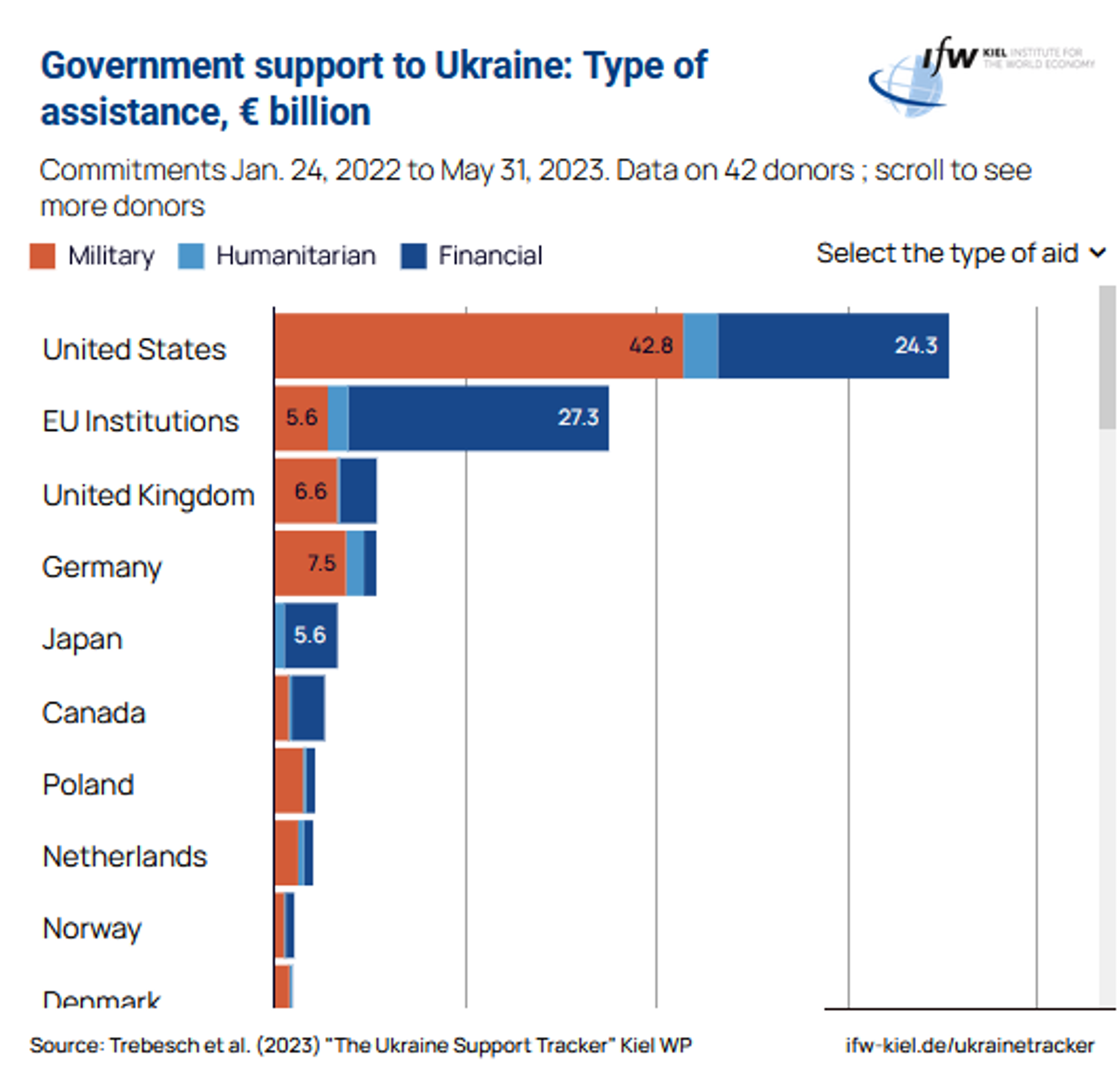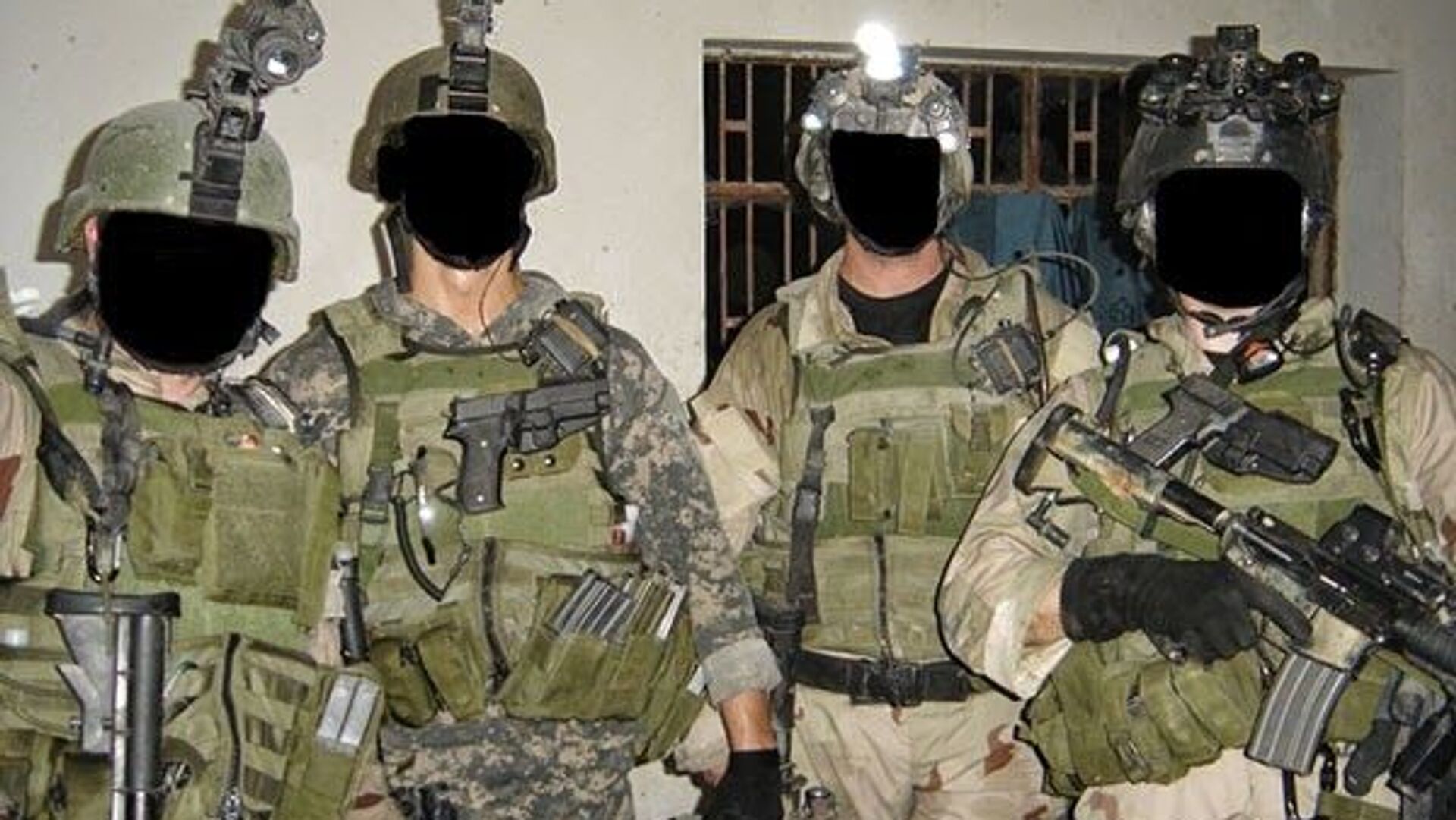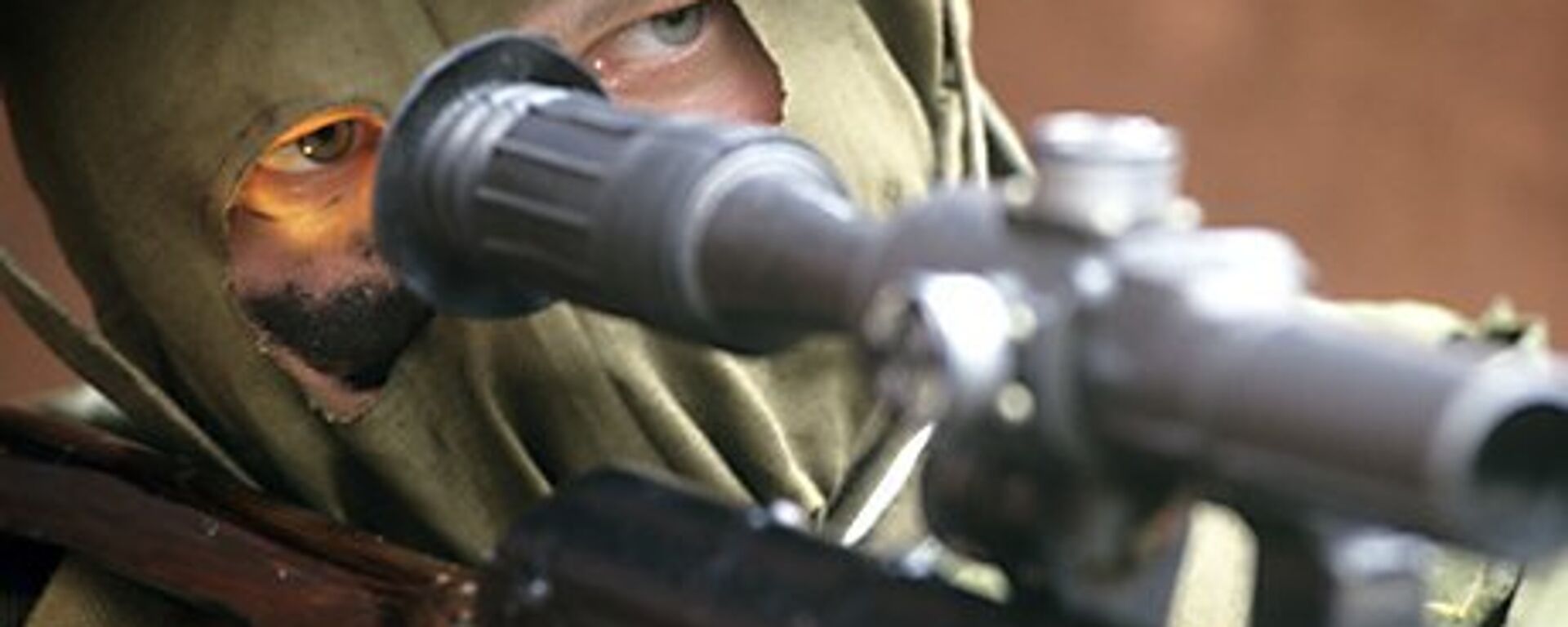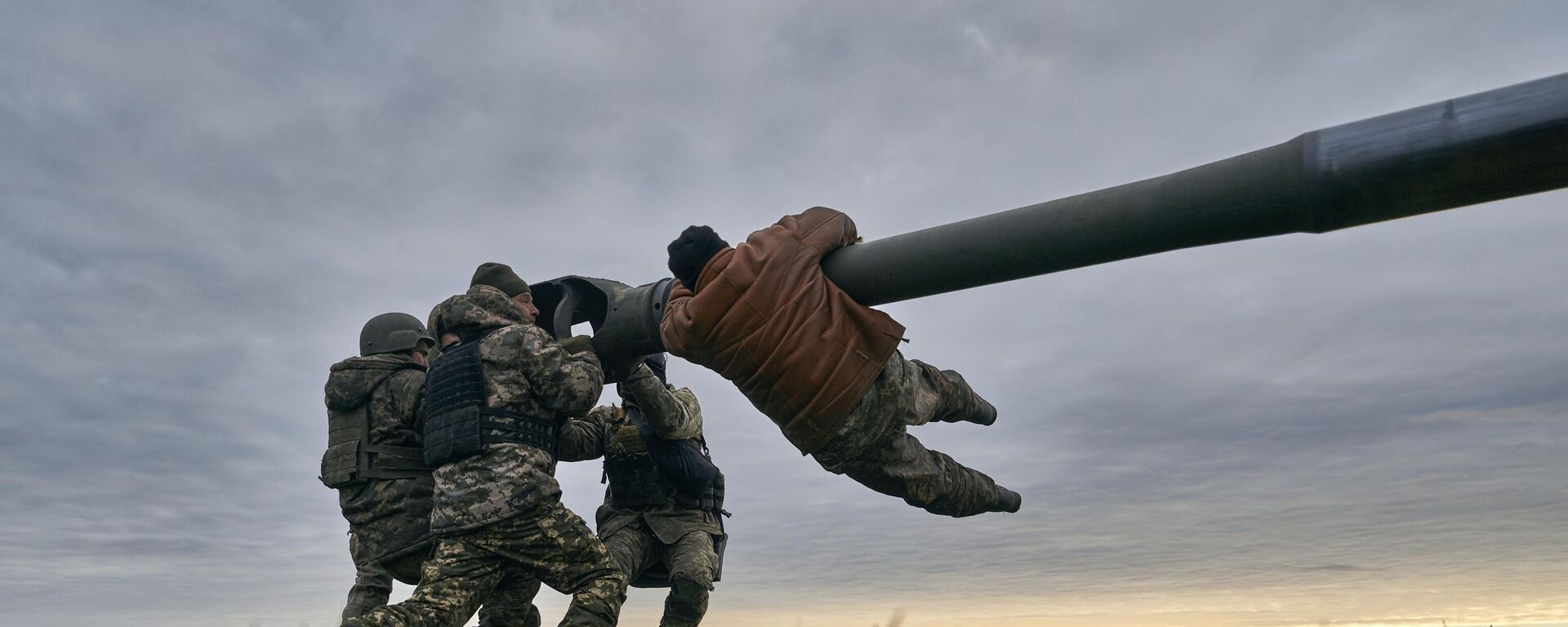Mercenaries in Ukraine: How Much is Their Salary?
17:39 01.09.2023 (Updated: 18:50 01.09.2023)
Subscribe
There are wildly different estimates of the salries of the foreign ‘soldiers of fortune’ fignting on the Ukrainian side, from less than $1,000 a month to $2,000 per day. Sputnik did a little research and talked to a pair of veteran military experts to try to get to the bottom of things.
The Russian military has reported a major uptick in Ukraine’s recruitment of foreign mercenaries. Estimates on just how much these ‘soldiers of fortune’ get paid vary wildly, from less than $1,000 a month to $2,000 per day.
A Bundeswehr vet who volunteered to fight alongside the Ukrainian Army gave a tell-all interview to German media recently, revealing the surprisingly low going rate of foreigners taking part in NATO’s proxy war against Russia in Ukraine.
“It depends on how much time you spend on the front lines. There is a principle of combat payments – that is, they pay for each day spent in battle…Per month, it turns out to about €2,000-€2,500 euros. For Ukraine, this is quite a lot,” the mercenary said. He added that troops who spend more time on the front can get even more, up to about €3,000 (or $3,260), per month.
The merc’s testimony seems to match up with figures put out in February by Russia’s Investigative Committee, which has been collecting information on potential war crimes in Ukraine. According to investigators’ figures, foreigners in Ukraine receive between 30,000 and 100,000 hryvnia (about $815-$2,710). The Investigative Committee launched criminal cases against 160 mercs from 33 different countries, including Georgia, the US, Latvia, Israel and Sweden related to suspected crimes against Russian troops and civilians.
The ballpark figures have also been separately confirmed in an investigation by French media this summer, which uncovered that mercs attached to Ukraine’s infamous International Legion receive a base salary of €500 euros, and up to €3,000 a month when they’re on the front lines. Volunteers also complained about having to pay out of pocket for vehicles, supplies and even small arms, notwithstanding the nearly $100 billion in aid doled out by the West to date for weapons.
The monthly figures are a far cry from the smattering of information reported during the early stages of the crisis last year, including reporting by British media in March 2022 on payments of up to $2,000 per day plus bonuses for multilingual former soldiers willing to head to Ukraine to engage in extraction operations.
It also challenges the traditional range of “security contractor” job postings, which similarly cite a pay rate of $500-$1,000 per day, equivalent to a six-figure salary when annualized (assuming that the fighter lives that long).
Where Has the Money Gone?
“$1,000-$2,000 a month, I think, is kind of low. If you told me that’s for a day, I’d say okay, I can see that. Maybe a little on the high side, but up to that amount for a commander or something, yes, I can see that. But if you’re talking on a per month basis, actually it’s quite low for a mercenary type of situation,” Earl Rasmussen, a retired US Army Lieutenant Colonel-turned international consultant with over two decades of military experience, told Sputnik.
“I’ve seen some discussions saying mercenaries got between $30,000 and $50,000 a year for a job and squad commanders – up to $100,000. That would be more in the realm that I would be thinking of. And then senior commanders, probably, maybe $200,000-$250,000 for the year. Maybe even more,” the observer added, stressing that $1,000-$2,000 a month to him seemed “on the low side.”
“Unless [it was] for a cause I firmly believe in, I wouldn’t put my life on the line for that kind of money,” Rasmussen said, referring to the dangers foreign nationals subject themselves to, all for the average salary equivalent to or even less than someone working a blue collar job in retail or manufacturing in the US.
In the case of the German merc, matters beyond the monetary may have played a role, with media reporting that a woman the merc met on Tinder was waiting for him in Kiev. In other cases, as French media discovered, at least a third of the estimated 100 French volunteers fighting in Ukraine were driven by neo-Nazi views.
“The survival rate for many on the front lines is poor, and I expect the low quality of the military leadership and the political demands in Ukraine are not much of a draw for that limited pay,” Karen Kwiatkowski, a retired US Air Force Lieutenant Colonel and Pentagon staff officer-turned-whistleblower, told Sputnik.
“It seems as if the Ukrainian military has been dwindling to those who will fight for the sake of fighting, or those who are forced to fight,” Kwiatkowski said.
“Ukraine is sending 70+ year old men for NATO training in Germany, and when this kind of extreme is combined with reports that very few Ukrainian refugees in Europe intend to return home after the war, that says a lot about the present state of its ability to defend its remaining border, and its future as a productive nation,” the observer lamented.
He Who Pays the Piper Calls the Tune?
Asked about the sources of the funding for the mercs, Rasmussen emphasized that while the checks may be signed by the Ukrainian government, the money obviously comes from Kiev’s Western backers.
“From my understanding, the US government is paying the salaries of senior government people in Ukraine to include retirements and medical coverage. I wouldn’t be surprised if their military is being paid out of the US,” the observer said, adding that he’s heard rumors that Washington was providing an extra billion dollars a month in cash for payments to the Ukrainian government.

Military, humanitarian and financial support provided to Ukraine by country by Western patrons up to May 2023.
© Photo Kiel Institute for the World Economy
Along with the cash coming from Western donor countries, Rasmussen pointed to a massive slush fund of monies contributed by private donors.
“You’ve got donors involved here. You’ve got NGOs. You’ve got people like [George] Soros, Open Society, who knows how they’re funneling their money and where that goes to. I’m sure it’s getting laundered through several different organizations. But the original source is from the West” as far as the “mercenary dollars” go, the analyst emphasized.
Merc Recruitment as a Means to Plug Gaps
Russia’s Defense Ministry has reported that the disruption of mobilization plans and efforts to conceal staggering losses amid Kiev’s ongoing attempted counteroffensive have led to the intensified recruitment of mercenaries, with US intelligence assisting in recruitment, including from areas of Syria occupied by the United States. Russian officials have indicated that recruitment efforts have included “asocial elements that are prepared to fight for much less money.”
The Russian military has estimated that nearly 5,000 foreign mercs have been killed, with roughly 4,900 more said to have fled the country over the past year-and-a-half. In May, the MoD estimated that an estimated 2,500 mercenaries remain on the battlefield fighting for Ukraine.
Many of the foreign mercs who managed to escape alive have since recounted horror stories of their experience, with some who came to the country with bright-eyed idealism later expressing regret after discovering the harsh realities of service, including corruption, lack of professionalism, poor treatment and poor pay. Others have complained that the Ukrainian proxy war is nothing like the traditional US and NATO wars in places like Iraq and Afghanistan, where their side enjoyed overwhelming artillery and air support. “The worst day in Afghanistan and Iraq is a great day in Ukraine,” one US soldier-told merc told US media in July.



